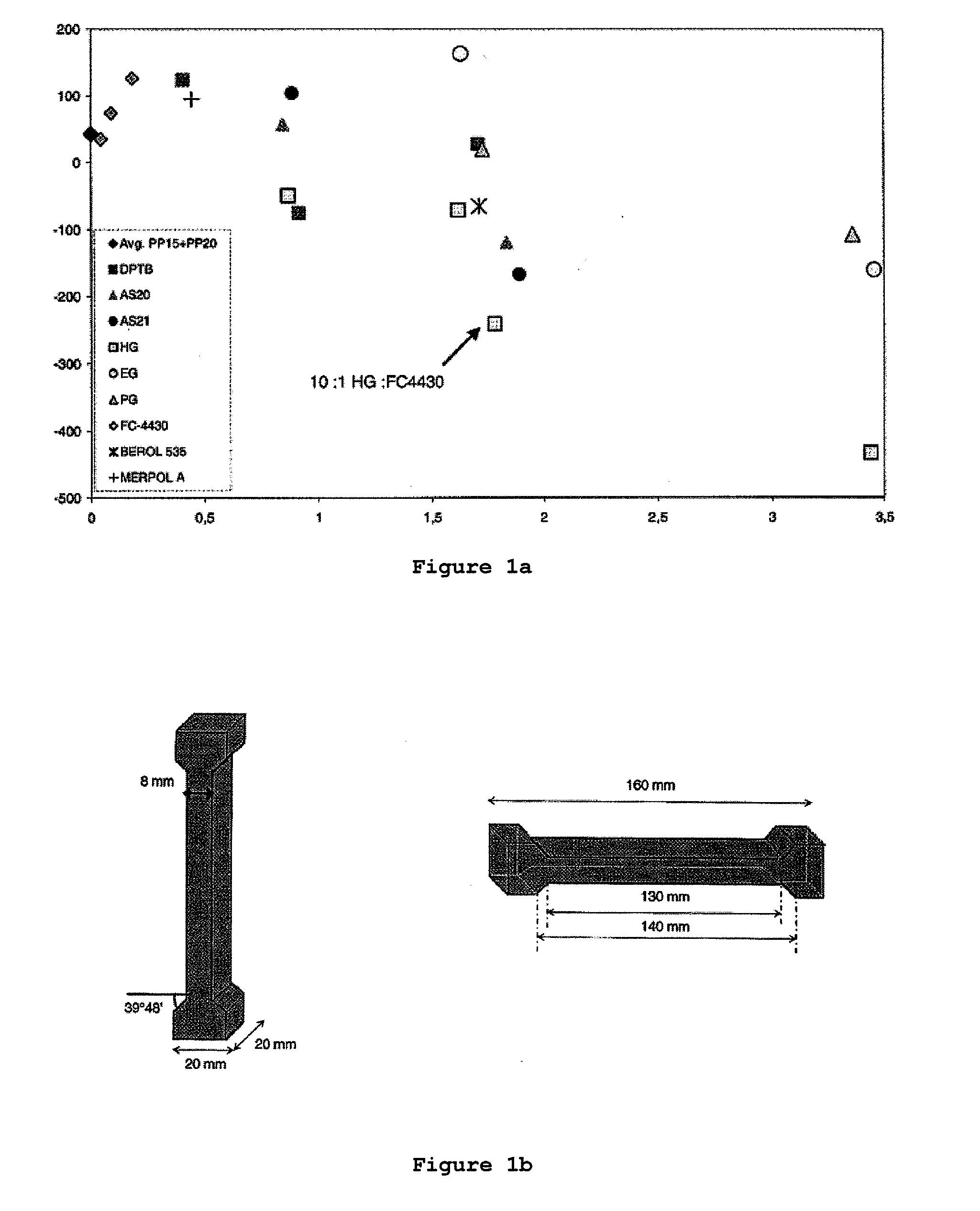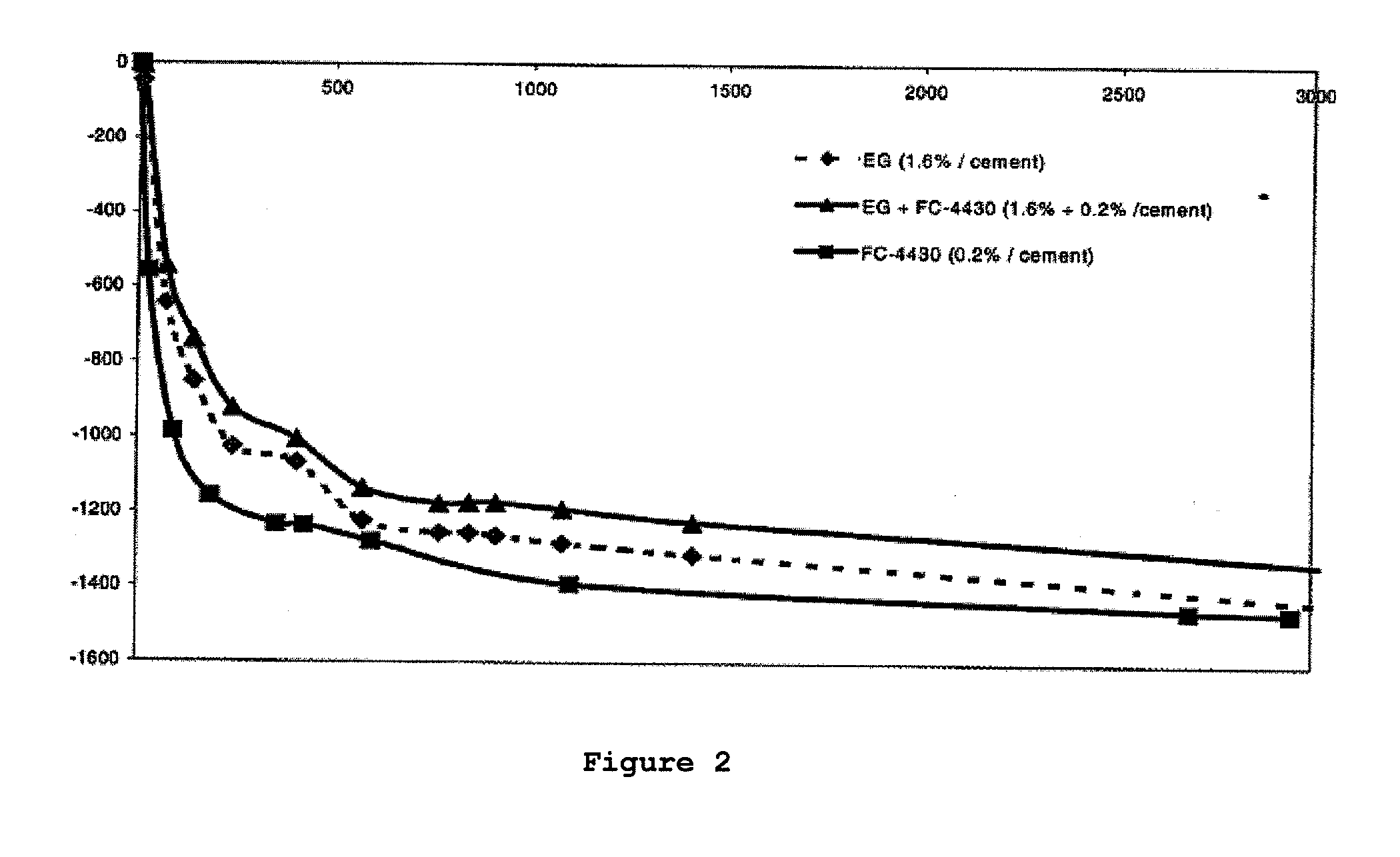Cement shrinkage reducing agent and method for obtaining cement based articles having reduced shrinkage
- Summary
- Abstract
- Description
- Claims
- Application Information
AI Technical Summary
Benefits of technology
Problems solved by technology
Method used
Image
Examples
example 1
Shrinkage Reduction in a Cement Paste
[0152] Experiments carried out to investigate the relative ability of certain additives to reduce reversible second drying shrinkage are shown in FIG. 1a. These experiments were conducted on a cement paste, i.e. a water / cement mixture at a W / C ratio of 0.4. The cement used was CEM1 52.5 N PMES (Lafarge). Deionised water at 20° C. (±1° C.) was used. As already indicated above, the samples were soaked by immersion into various additive solutions. It is observed that the individual additives demonstrate a certain reduction in drying shrinkage, hexylene glycol showing the best performance. However, the best result by far is observed with the combination of hexylene glycol with the non ionic fluorinated surfactant FC-4430. The mixture gives a significantly better result than any of the other additives tested at the same dosage, including hexylene glycol and is also far better than using the FC-4330 on its own, which is totally ineffective. FIG. 1a d...
example 2
[0154] Sets of paste specimens were made in which organic additives were added as an admixture, i.e. with the mix water. They were cast into 20×20×160 mm prisms, which were moist cured for 24 hours in moulds at 20° C., and then for six days at 60° C. and 100% RH, then cooled to 20° C. wet before starting drying shrinkage measurements at 20° C. and 50% RH. Length changes vs. time are shown in FIG. 3.
[0155] Three sets were tested:
[0156] a plain cement paste (HNPP30-water);
[0157] a cement paste admixed with 4% hexylene glycol (HNPP31-4% HG); and
[0158] a cement paste admixed with 4% of a 1% solution of fluorinated surfactant FC4430 in hexylene glycol (HNPP32-4% (99% HG-1% FC4430)). Admixture dosages are expressed as percentage by mass of cement)
[0159] Results shown in FIG. 3 indicate that the use of the mixture of hexylene glycol and FC4430 was unexpectedly more effective than the use of the same amount of pure hexylene glycol in reducing the first drying shrinkage of well-cured ce...
PUM
| Property | Measurement | Unit |
|---|---|---|
| Fraction | aaaaa | aaaaa |
| Percent by mass | aaaaa | aaaaa |
| Shrinkage | aaaaa | aaaaa |
Abstract
Description
Claims
Application Information
 Login to View More
Login to View More - R&D
- Intellectual Property
- Life Sciences
- Materials
- Tech Scout
- Unparalleled Data Quality
- Higher Quality Content
- 60% Fewer Hallucinations
Browse by: Latest US Patents, China's latest patents, Technical Efficacy Thesaurus, Application Domain, Technology Topic, Popular Technical Reports.
© 2025 PatSnap. All rights reserved.Legal|Privacy policy|Modern Slavery Act Transparency Statement|Sitemap|About US| Contact US: help@patsnap.com



